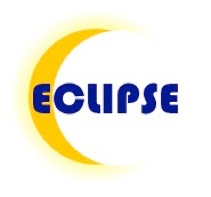Bonds in chemicals and chemical bonding: Amy did not make the link
Amy was a participant in the Understanding Science project. The first time I talked to Amy, near the start of her GCSE course in Y10 she told me that “in normal chemistry (i.e. the chemistry part of 'double science', as opposed to the optional additional chemistry lesson as part of 'triple science' that Amy also attended) we’re doing about ionic bonding” which was “atoms which have either lost or gained electrons so they are either positively or negatively charged” and
“how the outer electron’s transferred…to complete the outer shell of the erm chlorine, thing, ion…and the sodium atom loses erm one electron, is it, yeah one electron, erm which the chlorine atom gains, and that erm, yeah that completes its outer shell and makes the sodium positively charged and the chlorine negatively charged”.
(So Amy had acquired a common alternative conception, i.e. that ionic bonding is electron transfer, and that this occurs to atoms to complete their electron shells.)
Bonding was “where one thing is joined on to another thing, and it can be chemically bonded”. Although Amy did not use the term covalent bonding, she told me that “in chemical bonding, erm like in a compound, where erm - two or more elements are joined together, that’s an example of chemical bonding, but in ionic bonding it’s the erm electrons that are transferred, I think.”
In year 11 when she was studying fats she talked about “how they’re made up and like with all the double bonds and single bonds” where a double bond was “where there are kind of like two bonds between erm carbon atoms instead of like one” and a bond was “how two atoms are joined together”. Later in Y11, Amy told be that she did not know how to explain chemical bonding, but “in lessons like we’ve always been shown these kind of – things – where you kind of, you’ve got the atom, and then you’ve got the little, grey stick things which are meant to be the bonds, and you can just – fit them together.”
As she had told me everything was made of atoms, I provocatively asked her if the chemical bond was made of atoms. Amy had “absolutely no idea” but she “suppose(d) it would have to be, wouldn’t it”.
Later in the year I asked her why ice melts readily, but iron does not, and she suggested that “maybe the bonds between the particles stronger or something”. I asked her about the models she had used in class to show structures: “the little stick things are like the bonds between the atoms holding it together". I asked her what a chemical bond was, and she told me that “I don’t know, I don’t have a clue”.
I asked her if she remembered talking to me about ionic bonding , back at the start of her course. Amy’s class “were revising something like that, but, isn’t that something to with like when an atom like gives away an electron or, no that’s completely different isn’t it?”. I asked if that had anything to do with chemical bonding. Amy did not know, and “I can’t see the link”. She remembered that covalent bonding was “where atoms would like share in electrons or something to get a full outer shell”. I asked if this had anything to do with the lines we had drawn as bonds in diagrams of structures she had been studying. Amy “I guess(ed) there is, because you mentioned it, but … I can’t see how”. She told me “it’s never, it like, in lessons it’s never been linked, like that, it’s just like one separate topic, and another separate topic.”
So she had been working in class with models and diagrams that had sticks and lines as bonds, and their roles was “to hold the molecule together”, but she did not link this with having been taught about covalent bonding, something “we did … years ago”.
This seems to be an example of a fragmentation learning impediment where prior learning is not accessed and applied when new new material. Quite likely the teacher was expecting prior learning to be used as prerequisite for understanding new teaching, but the learner does not recognise its relevance and so does not bring it to mind.
Return to ECLIPSE homepage
List of science topics

Dr Keith S Taber kst24@cam.ac.uk
University of Cambridge Faculty of Education